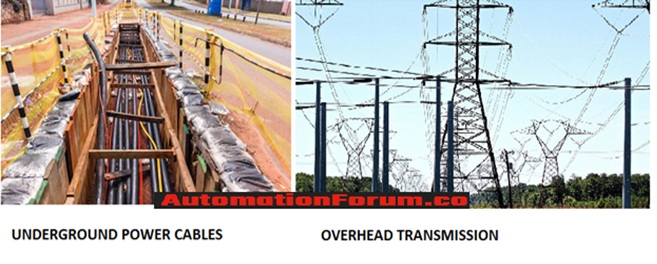What are the advantages of underground cabling over the overhead lines?
The underground cabling or under-ground power transmission can provide safe power transmission. The electrical power reliability can be improved by underground power transmission, by doing underground power transmission we can avoid certain damages that could happen in overhead lines such as high wind, ice and snowstorms, and falling trees. So by using underground power transmission we don’t need to worry about environmental problems such as overhead lines. But mostly we use overhead power transmission and it is because the underground installation will cost a lot more than the overhead transmission lines it is very costly when compared to the overhead power lines.
- What are underground wiring and laying of underground cables?
- HOW NETWORK TRANSFORMER IS USEFUL FOR DISTRIBUTION
- Electrical conduits
- Electrical system
- Distribution transformer

Why do we choose overhead power transmission over Underground power transmission?
In order to do the underground cable installation, we need to do the soil stripping, continuous trenching and creating underground vaults, and all this would take a lot of time and cost when compared to an overhead transmission line. While creating an underground transmission we could face a lot of obstacles like drainage, heat transmission from the cables could badly affect the vegetation near it. The underground transmission lines will also be affected by many environmental damages such as hurricane damage, earthquake damage, lightning damage, and rodent and human damage. There will be the capacitance in the underground cable so without any load current flow could occur and this is a major disadvantage. The capacitance of the underground cable is double that of the overhead lines and this is a disadvantage. The underground transmission is not possible for all places or it can also be described as the widespread underground cable transmission cannot be achieved. We can extend or can make changes easily in overhead transmission lines while it is very hard in case of underground cable to extend it after the cable laying. The chances of faults are very less when compared to the overhead transmission line for the underground transmission but in case of any fault, it will be really difficult to repair it.
Where can we use underground power transmission?
The underground power cables are not affected by weather conditions and they are safe, so it can be used in cities and also in populated areas. We can use underground power transmission in submarine crossing, power stations, substations, airports, etc.
What are the advantages of underground power transmission?
- It won’t be damaged by severe weather conditions
- These cables won’t be harmful to any wildlife or the low flying aircraft
- The chances of conductor theft are entirely reduced, there won’t be any connections that is illegal.
- Good safety
- There will be fewer faults when compared to overhead transmission lines
- The voltage drop is very low
What are the disadvantages of underground power transmission?
- Underground cables are very dangerous for soil diggers
- The voltage control of the underground cable is very hard
- The underground cables are very costly compared to overhead transmission lines
- In case of any fault, it is really difficult to do the maintenance
- Underground systems have voltage limitation for power transmission





